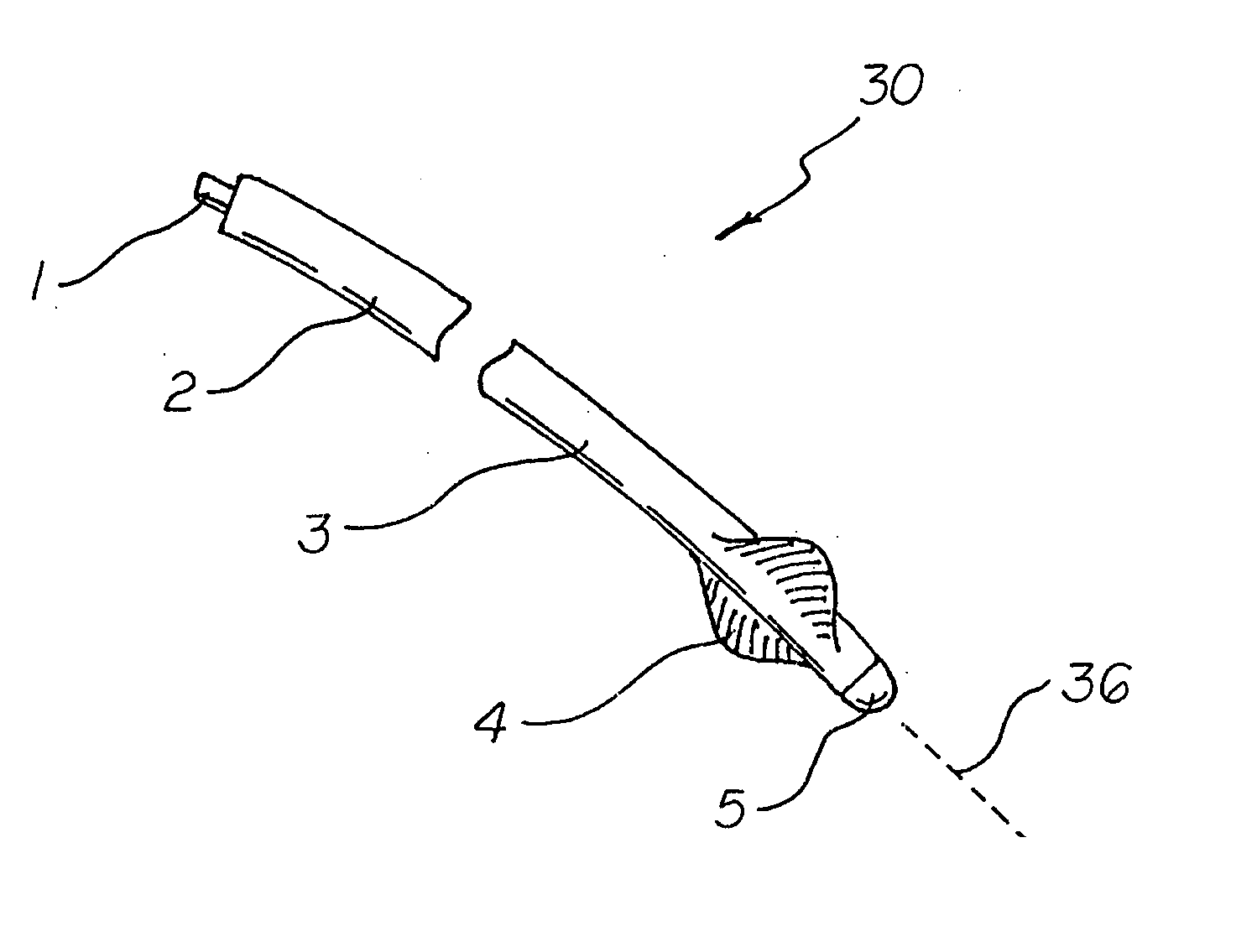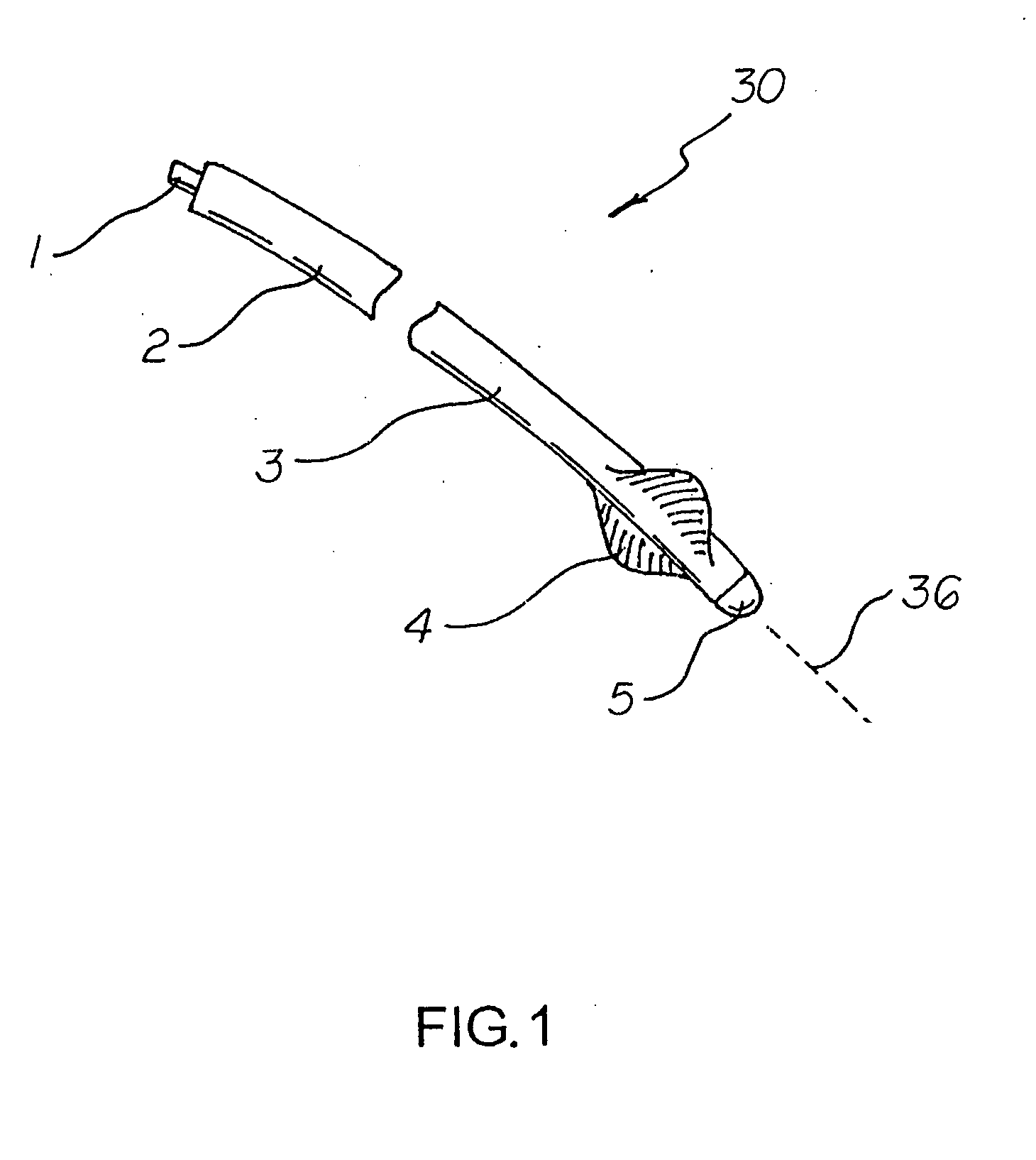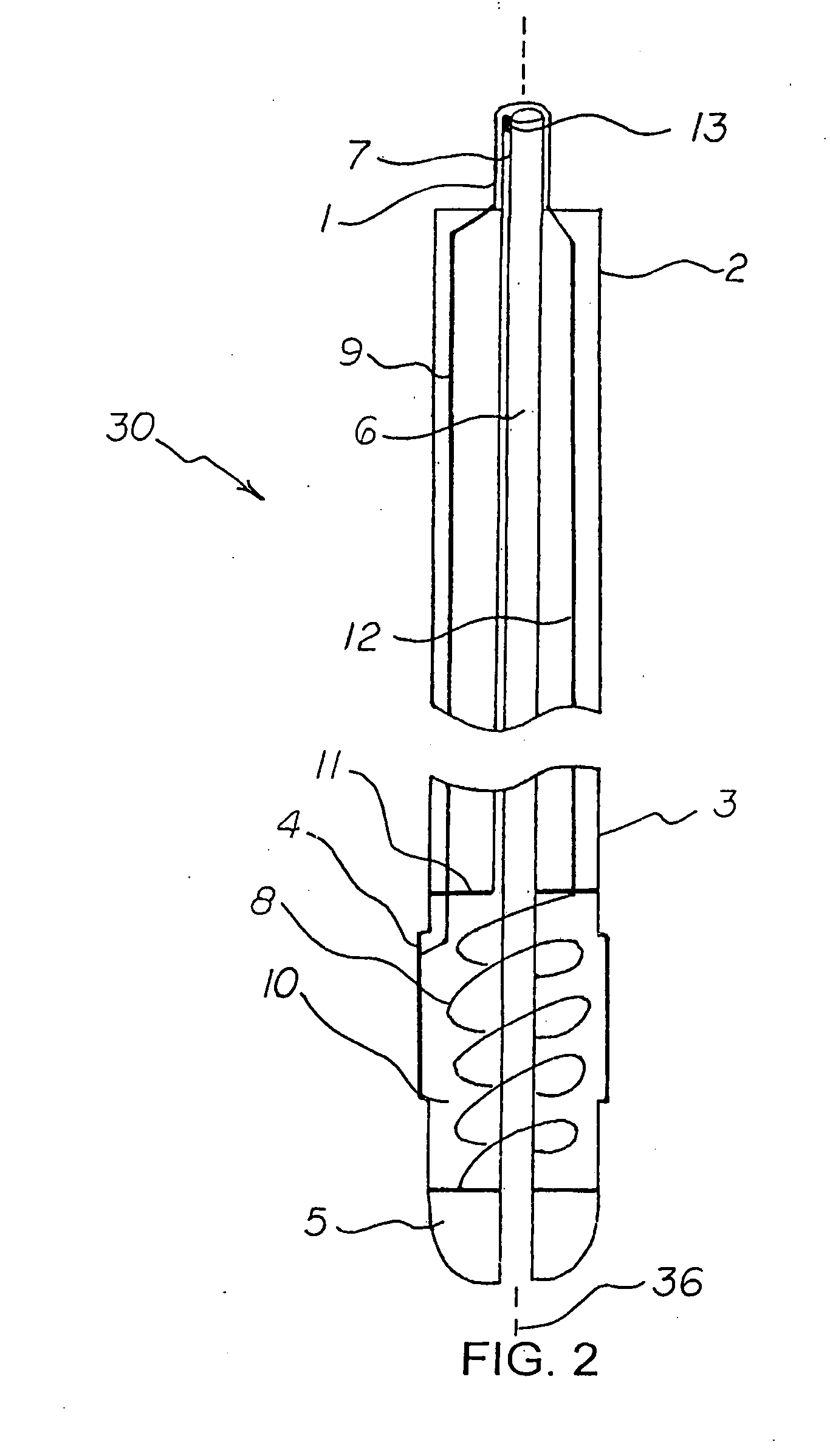Active fixation coronary sinus lead apparatus
a technology of active fixation and lead apparatus, which is applied in the direction of transvascular endocardial electrodes, therapeutic cooling, therapy, etc., can solve the problems of poor pacing characteristics of the site, low efficiency of the procedure, so as to reduce the distortion, minimize the risk of clotting in the vein, and the effect of reducing the risk of clotting
- Summary
- Abstract
- Description
- Claims
- Application Information
AI Technical Summary
Benefits of technology
Problems solved by technology
Method used
Image
Examples
Embodiment Construction
[0069] With reference to the drawings, a new and improved active fixation coronary sinus lead apparatus embodying the principles and concepts of the present invention will be described.
[0070] Turning to FIGS. 1-9, there is shown a first embodiment of the active fixation coronary sinus lead apparatus of the invention generally designated by reference numeral 30. In the first embodiment, active fixation coronary sinus lead apparatus 30 is shown with a pressure monitoring and helix torquing mechanism and selectively active electrode sectors for prevention of diaphragmatic stimulation.
[0071] Generally, an active fixation coronary sinus lead apparatus 30 includes electrode support means which include an electrode support longitudinal axis 36. A plurality of electrode segments 24 (also called active electrode segments 24) are supported by the electrode support means and are arrayed around the electrode support longitudinal axis 36. A plurality of insulation segments 26 (also called inac...
PUM
 Login to View More
Login to View More Abstract
Description
Claims
Application Information
 Login to View More
Login to View More - R&D
- Intellectual Property
- Life Sciences
- Materials
- Tech Scout
- Unparalleled Data Quality
- Higher Quality Content
- 60% Fewer Hallucinations
Browse by: Latest US Patents, China's latest patents, Technical Efficacy Thesaurus, Application Domain, Technology Topic, Popular Technical Reports.
© 2025 PatSnap. All rights reserved.Legal|Privacy policy|Modern Slavery Act Transparency Statement|Sitemap|About US| Contact US: help@patsnap.com



